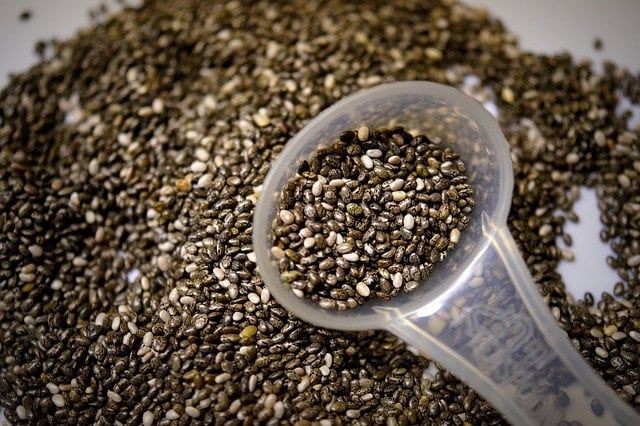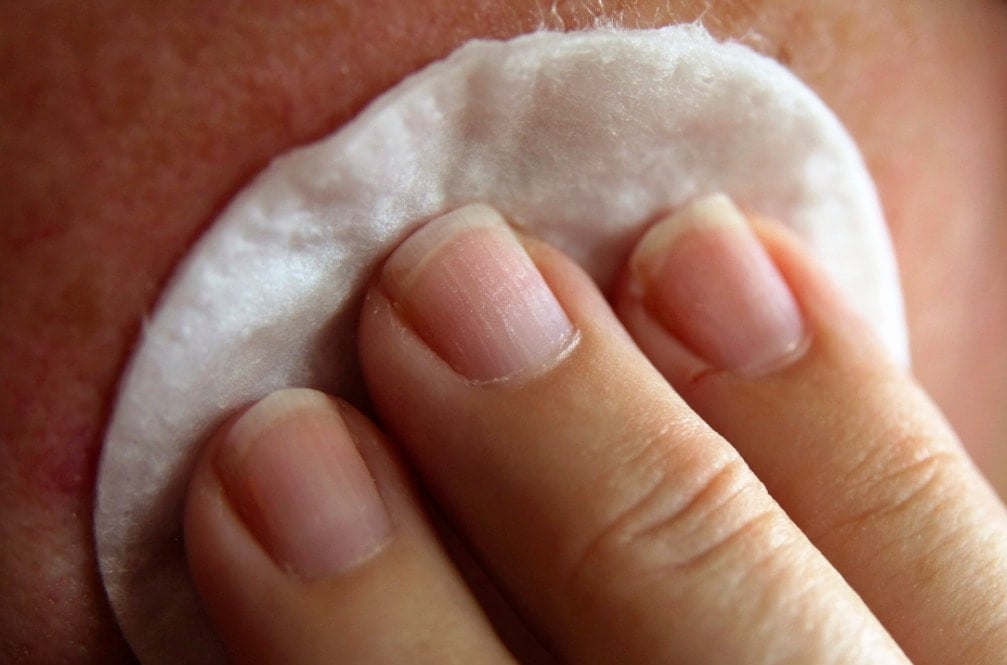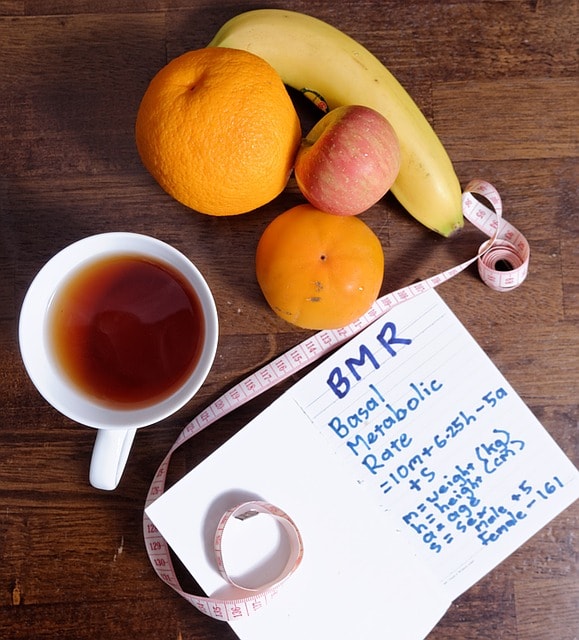Table of Contents
Introduction
Seeds of the chia plant, Salvia hispanica, have been a prized crop in Mexico since the time of the Aztecs more than a thousand years ago. The Aztecs believed it gave them increased energy and endurance. More recent research on the pharmacologic properties of chia seed have led many to claim or believe that chia has myriad (and nearly miraculous) health benefits that include:
- Promoting healthy skin, bones, and muscles
- Supporting the heart and digestive systems
- Facilitating weight loss
- Preventing cancer
- Reducing the signs of ageing
- Aiding in the treatment of diabetes and metabolic syndrome
Below, I examine the available medical and scientific literature to see if any of these claims stand up to careful scrutiny.
What Are Chia Seeds?
Chia is a species of flowering plant in the mint family Lamiaceae. It is native to Central and Southern Mexico and Guatemala, and was cultivated by the Aztecs in pre-Columbian times. It was considered an important crop, perhaps even as important as maize. It was part of the basic survival ration of Aztec warriors, who often had to travel long distances. They believed chia seeds imparted high energy, endurance, and good health.
The Aztecs also used the seeds as offerings in religious rituals, which caused them to be banned after the Spanish conquest.
In his 2009 book, Born to Run: A Hidden Tribe, Superathletes, and the Greatest Race the World Has Never Seen (1), Christopher McDougall studied the running habits of the super-athletic Tarahumara Indians in Mexico. McDougall describes how these runners consumed chia seeds while on their desert runs. The book started a flurry of articles in running magazines touting the endurance benefits of chia. Now many marathon runners swear by them.
Chia seeds are 2-mm-long, oval seeds, motley colored in brown, gray, black, and white. The seeds are hydrophilic (“water-loving”) and absorb up to twelve times their weight in liquids when soaked. While soaking, the seeds develop a thick, gluey (mucilaginous) coating that gives chia-based beverages a distinctive gelatinous texture.
Chia has a high nutritional potential due to the seed’s composition. It contains 16-20% protein, 31-34% fat, and 37-45% carbohydrates. Seeds also contain minerals (calcium, phosphorus, potassium, and magnesium), vitamins (thiamine, riboflavin, niacin, folic acid, ascorbic acid, and vitamin A), and antioxidant compounds (2). They contain about 140 calories per ounce. It’s important to be aware that the specific nutrient composition of a particular crop of chia can vary greatly and is dependent upon where a crop is grown, the weather conditions at that site, as well as the developmental stage of the plant (3).
The fat (fatty acids) found in chia seeds is mostly in the forms of ω-3 alpha-linolenic acid (ALA) and ω-6 alpha-linoleic acid. Both are considered essential fatty acids because they are not synthesized in the body and must be obtained from the diet. These acids are converted into longer-chain polyenoic acids such as eicosapentaenoic acid (EPA) and docosahexaenoic acid (DHA). These are considered polyunsaturated fats. Both EPA and DHA can lower triglycerides, but only DHA is able to also raise low-density lipoprotein (LDL). These are both considered cardioprotective effects.

As mentioned above, the predominant form of omega-3s in chia seeds is alpha-linoleic acid (ALA). ALA needs to be converted into the “active forms,” EPA and DHA, before the body can use it. Unfortunately, humans are inefficient at converting ALA into EPA and DHA. For adults, it might be less than 1% for DHA, and probably less than 5% for EPA. Therefore, plant omega-3s tend to be vastly inferior to animal sources like fish (4).
We all know that oxygen (O2) is essential for life. Mitochondria in our cells use electrons taken from oxygen molecules to generate ATP (adenosine triphosphate), which is the molecular form of energy transfer within our bodies. A byproduct of “oxidation” is the production of free radicals that are oxygen molecules with unpaired electrons. These molecules are “unstable” (think reactive) and can chemically interact with cell components such as DNA, protein, or lipid, stealing their electrons to become stabilized. This can then trigger a chain of free radical reactions, which have the potential to cause considerable damage to cells.
Evidence is mounting that most of the degenerative diseases that afflict us have their origin in these deleterious free radical reactions. These diseases include atherosclerosis, cancer, inflammatory joint disease, asthma, diabetes, senile dementia, Alzheimer’s disease, and degenerative eye disease.
Fortunately, our bodies have their own defense systems to counteract a potential free-radical free-for-all. Our cells produce a complex system of antioxidants that can donate electrons to free radicals without becoming damaged or destabilized themselves. Our defense systems include enzymes such as glutathione, catalase, and superoxide dismutase.
Antioxidant molecules vitamin A, vitamin C, and vitamin E also come from our diets. Chia seeds contain many other antioxidants, including tocopherols, phytosterols, carotenoids, and polyphenolic compounds (including the flavones myricetin, quercetin, and kaempferol).
Chia is also a source of dietary fiber. According to the U.S. Department of Agriculture’s food composition database, it contains about 1-½ times as much fiber as bran and 3 times more than almonds, quinoa, or amaranth.
Chia is gluten-free.
Is There Any Research?
As of January 2018, the biomedical literature (PubMed.gov) contains only 113 articles about chia seeds, dating back to 2000. Most of these research studies involve experiments with laboratory animals (mostly rats) or “test tubes” (in vitro studies). When I searched for “Salvia hispanica,” I found 82 papers, many of which were already cited under “chia seeds.” Of all the articles mentioning chia, only 9 studies appear to involve human subjects.
Turning to the U.S. government’s database of clinical research trials (ClinicalTrials.gov), “chia seeds” or “Salvia hispanica” yields only six studies. Only one is currently recruiting, four have been completed, and one’s status is listed as unknown. These studies involve the following medical conditions: Non-Hodgkin’s lymphoma, metabolic syndrome, post-prandial blood glucose, type 2 diabetes, and obesity.
There is also a large group of papers in industry publications that focus on the use of chia seeds in feeding livestock or as an addition to other food substances (such as baked goods). For instance, studies have shown that if you feed chia seeds to chickens, you can increase the amount of omega-3 found in their eggs, without a change in taste as described by Ayerza in Chapter 14 of reference (5).
By comparison, I searched for flax seeds, another plant-based nutrient often compared with chia seeds, and found over 700 articles in PubMed. There were 41 studies cited about the clinical use of flax seed and 10 clinical studies on ClinicalTrials.gov.
Bottom Line
The extremely limited number of scientific studies available makes it difficult to do much more than speculate about the potential health benefits of chia seeds. Much more research is needed.
Are Chia Seeds Good for the Skin?

Some have suggested that because chia seeds are high in antioxidants, they could speed up the skin’s repair systems and prevent further damage. There are currently no research studies that support this claim.
I have found only three articles that discuss the use of chia seeds for skin conditions. A study by Diwakar et al. (6) looked at the ability of chia seed extract (high in ω-3 and ω-6) to inhibit melanogenesis (the production of melanin in skin cells). Melanin is the pigment which gives skin its color.
Their study showed that chia seed extract did inhibit the production of melanin, especially when it was combined with a pomegranate fruit extract. Note: There is also a patent pending by this author for a skin-whitening product containing chia seed extract.
A study by Lee et al. (7) looked at the water-retaining properties of chia seeds for use as a moisturizer. Using the forearm of human volunteers, they assessed the moisturizing effects and trans-epidermal water loss (TEWL) of a cosmetic product that contained a chia seed polymer. This preparation showed good skin hydration effects that were better than those of sodium hyaluronate, a popular ingredient in many cosmetic moisturizers.
Lastly, a study by Jeong et al. (8) used topical chia oil extracts to relieve the itching symptoms of otherwise healthy patients with xerotic pruritis (dry itchy skin) and those with end-stage renal failure. Both groups of patients showed improvement in symptoms and skin moisture. The patients were assessed both subjectively and objectively with the use of TEWL and skin capacitance.
Bottom Line
There are no studies that show the antioxidants found in chia seeds can prevent or repair skin damage. The hydrophilic (water-loving) properties of chia seeds may be more effective as a skin moisturizer than some other substances commonly used in cosmetics.
Are Chia Seeds Good for the Heart?

Because of the omega-3 and anti-inflammatory properties of chia seeds, it has been postulated that their regular intake could play a cardioprotective role.
Unfortunately, there are very few (a mere 7) studies that have examined the effect of chia seed ingestion on cardiovascular risk factors in humans. A systematic literature review by Ferreira and colleagues (9) concluded, “most of the studies did not demonstrate statistically significant results in relation to cardiovascular disease (CVD) risk factors.”
One of these studies by Nieman et al. (10) was a randomized, double-blind trial of 62 overweight women (ages 49-75) and showed that, despite the increased concentration of ALA and EPA in the blood serum, there was no change on inflammatory markers, blood pressure, or body composition.
In contrast, another study, by Vuksan et al. (11), looked at 20 men and women (age 18-75) with type 2 diabetes. After 12 weeks of ground chia seeds added to bread, patients had reduced systolic blood pressure and C-reactive protein level (CRP) – a blood test marker for inflammation. Participants also doubled their concentrations of ALA and EPA.
Bottom Line
Studies on chia’s effects on cardiovascular health are inconsistent. Larger studies with human subjects are needed to resolve these discrepancies.
Do They Help Treat Diabetes?

Although limited in number, the studies looking at chia’s impact on blood glucose and insulin resistance (both important factors in type 2 diabetes) show some promise.
In a study by Chicco et al. (12), rats were fed a sucrose(sugar)-rich diet (SRD) for three months. At the end of this period, they were found to have dyslipidemia (abnormal fat profile) and insulin resistance (IR). For the next two months, these rats were put into two groups; one group continued on the SRD, and the other half were fed the SRD along with chia seeds (SRD+Chia). A third control group received a diet where the sucrose was replaced with maize starch.
Two months later, the rats that continued the SRD were hyperglycemic and insulin-resistant, while the SRD+Chia rats had normal levels of blood glucose and were not insulin-resistant. Those given chia also were found to have decreased visceral adiposity (fat in their organs) than SRD rats.
A follow-up study by Fontino et al. (13) fed chia to rats on SRD beginning right after weaning and continued into adulthood. SRD+Chia rats did not develop hyperglycemia and insulin resistance.
There are very few studies on the effect of chia on blood glucose and insulin resistance on human subjects. Vuksan et al. (14) compared chia seeds with flax seed regarding their effects on postprandial (“after-meal”) blood glucose levels and satiety (fullness) levels in healthy subjects. Although both slowed the rise in blood sugar levels compared to a control fed only glucose, chia appeared to have the “ability to convert glucose into a slow-release carbohydrate and affect satiety to a greater extent than flax, possibly due to the higher fiber viscosity.”
Metabolic syndrome is a clustering of at least three of the five following medical conditions: abdominal obesity, high blood pressure, high blood sugar, high serum triglycerides, and low high-density lipoprotein (HDL) levels. It is associated with an increased risk of cardiovascular disease and type 2 diabetes.
A study by Guevara-Cruz et al. (15) looked at the potential benefits of a diet which included nopal (cactus), chia seed, soy protein, and oats on 67 patients with metabolic syndrome. The group was on a calorie-restricted diet which included the above nutrients mixed together into a drink given twice a day.
A control group received the same kind of calorie-restricted diet without the supplement. Although both groups lost weight and had a decreased BMI, waist circumference, and blood pressure, only the supplemented group had a decreased concentration of triglycerides, CRP, and insulin resistance.
A double-blind, randomized, controlled study by Vuksan et al. (16) involved a group of 77 overweight or obese patients with type 2 diabetes. Both groups followed a 6-month calorie-restricted diet. One group received 30 g/1,000 kcal/day Salba™-chia, the other 36 g/100 kcal/day of an oat-based control.
At 6 months, the chia group lost more weight than the controls (4.2 lbs vs. 1.6 lbs) and a greater reduction in waist circumference. They also had lower CRP levels and insulin resistance, while glucose levels remained stable.
Bottom Line
Although more studies are needed to confirm these results, chia seeds may have a positive effect on those with type 2 diabetes and metabolic syndrome. Chia may be a useful dietary addition to the conventional therapy of diabetes.
Will They Boost Your Metabolism?

The use of chia by distance runners has led many to believe that chia can “boost” (speed up) your metabolism. There is very little scientific evidence to support this claim.
I could find only three studies that examined the effect of chia on metabolism. A 2011 study by Illian, Casey, and Bishop (17) in the Journal of Strength and Conditioning Research found no difference in athletic performance in six highly trained long-distance runners. Use of a mixture of chia seeds and Gatorade® worked as well as plain Gatorade® alone.
Dr David Nieman and colleagues have published a series of research studies on the effects of chia on metabolism, weight control, and exercise (running) performance (10, 18, 19). Nieman’s group looked at chia seed supplements in 62 overweight but otherwise healthy women, from 49 to 75 years old. These subjects were randomized into two groups: chia seed (whole or milled) and placebo (poppy seed) for 10 weeks. Only the women in the milled chia group showed an increase in plasma ALA and EPA, but there were no significant differences in 28 targeted metabolites that are associated with inflammation and disease risk factors between the groups (10). An earlier 2009 study (18), including 90 overweight men and women between the ages of 20 and 79 years, showed that taking chia supplements for 12 weeks had no influence on body mass, composition, or disease markers, including blood measurements of inflammation, oxidative stress, and lipid profiles.
A 2015 study by Dr Nieman and colleagues (19) looked at 24 runners. After baseline blood samples (measuring total white blood cell counts, cortisol, and regulators of inflammation called cytokines) were drawn, the subjects ingested ½ liter of flavored water alone or with 7 calories/kg chia seed oil.
They had blood samples taken a ½ hour after ingestion and again after running at a constant speed on a treadmill until exhaustion. The subjects returned 2-4 weeks later, and the process was repeated. All runners showed an increase in cortisol and inflammatory factors after their runs.
Although there was an increase in ALA levels with runners given chia seed oil supplements compared to water, there was no positive influence on running performance. There was no enhancement in the runtime to exhaustion, any alteration in lung function, or any decrease in blood levels of cortisol or inflammation markers.
Bottom Line
At the present time, there is little evidence that chia seeds can boost the metabolisms of overweight men and women or enhance the performance of runners.
Will They Make Your Bones or Teeth Stronger?

Chia is a source of calcium, which is an essential component of strong bones and teeth. Chia seeds contain 179 mg in a 2-tbsp.-sized serving, about half the amount (316 mg) of one cup of milk.
Bottom Line
Chia seeds are no more or less important than other dietary sources of calcium. Chia seeds have more calcium per serving than spinach and broccoli but much less than dairy products and tofu.
Will They Help Lose Weight and Build Muscle?

As reported in the sections above, on diabetes and metabolism, there is little evidence that chia seeds promote weight loss.
There are no studies that show that chia seeds can build muscle.
Bottom Line
Adding chia seeds to your diet will not help you lose weight or build muscle.
Do They Fight Breast or Cervical Cancer?

There have been more than 5,000 published studies that examine the possible relationships between vitamins and dietary fatty acids (such as those found in chia seeds and fish oils) and various types of cancer. I could find no more than about seven articles in PubMed that pertained in any way to chia seeds or oil and cancer prevention or treatment.
The few studies I did find (for example, see references (20-22)) were either done with mice or using cancer cells in vitro (in “test tubes”). None of these studies support the notion that chia has any significant effects on human cancer.
Bottom Line
There is little reason to believe that chia seeds or oil have any relevance to the prevention or treatment of any type of cancer.
Are Chia Seeds Safe?
Chia seeds have been a staple in the diet of indigenous people of Mexico and Central America for thousands of years. Adoption of the use of chia seeds by long-distance runners over 10 years ago has subsequently introduced the food to a wider audience.
Chia has been used as a food and as an additive to other foods, such as baked goods. In 2009, the European Food Safety Authority (Bresson et al. (23)) did an extensive study on chia seeds and ground chia as a food ingredient. They looked at nutritional composition, potential for food-borne spoilage during transport and storage, and toxicological information including heavy metals, mycotoxins (fungal toxins), and microbiological contaminants. The panel concluded that chia seeds and ground chia would not adversely affect its use in bread products.
There have been some minor side effects from chia seeds:
- If used in excessive amounts, the high fiber content of chia can cause abdominal discomfort such as pain, gas, and bloating. Constipation can occur if chia is taken without adequate amounts of water.
- Allergic reactions to chia are rare, but there may be some cross-reactivity with food crops that are taxonomically close to the chia family, such as oregano and thyme.
- As discussed above, chia may lower blood glucose or blood pressure. Patients taking blood sugar or blood pressure medications should talk with their doctors about any foods, including chia seeds, that may interfere with how these medicines work.
- People with swallowing problems or a narrowing esophagus should not eat chia in its dry, raw form. Dr Rebecca Rawl reported the case of a 39-year-old man with a history of swallowing problems who ate a tablespoon of dry chia seeds, followed by a glass of water, who developed difficulty swallowing. In the emergency room, doctors found a mass of gelatinous wet chia seeds obstructing his esophagus. They had to use a gastroscope made for premature babies to push small amounts of the mass into his stomach until his esophagus was cleared.
To prevent side effects, I would recommend that you start with 1 ounce (28 grams) daily and assess your tolerance before slowly increasing your intake. Stay hydrated as you increase your fiber intake, and soak chia seeds for 5–10 minutes before eating them.
Bottom Line
Overall, chia seeds have a good safety profile, although minor side effects can occur if used in excess.
Conclusion
Based on my review of the available scientific literature, as well as earlier reviews by others (24), there is limited evidence that chia seeds or oils are beneficial for preventing or treating any specific disease or other health condition. Most of the specific benefits claimed for chia are little more than modern folklore or unjustified extrapolations based on the types of vitamins, minerals, antioxidants, and fatty acids found in chia seeds.
That being said, chia seeds are a gluten-free, nutrient-dense food that can be a healthy part of your diet, especially if they replace nutrient-poor and processed foods you may be currently eating.

Leave a Reply